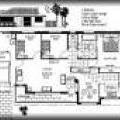COMMERCIAL BUILDING COSTING CASES STUDIES – TRADITIONAL DESIGN VERSUS TIMBER
 Article sourced from Forest and Wood Products Association, R&D Works, April, 2015
Article sourced from Forest and Wood Products Association, R&D Works, April, 2015
For building professionals in the non-residential sector, constructing multi-storey buildings in timber has been an opportunity seldom taken advantage of. As a consequence, and to demonstrate the opportunities available this research project has developed a set of realistic construction cost comparisons for four commercial building types when built in timber or using traditional materials, such as steel or concrete. In all cases, the comparison showed the building constructed in timber had potentially lower costs than for the so-called traditional competing non-timber solution.
The project comprised four steps: developing a model design for each of the four building types; designing each building in timber and a traditional material; developing an independent cost plan for each building type; and providing a commentary on each building type so that design professionals know why decisions were taken and what was considered in the cost plan.
The four building types profiled for the project were a 7 storey office building, an 8 storey apartment building, a 2 storey aged care facility and a single storey industrial shed. The researchers, together with experienced practitioners from the design, engineering and timber industries, developed new representative designs for each building, as privacy and intellectual property issues would otherwise have prevented publishing specific building information.
Each building was independently costed by an experienced industry quantity surveying company for a timber option as well as a more conventional concrete framed or steel framed building. It was assumed each building was to be built in a suburban location of a large Australian city.
The research reveals that constructing the building in timber resulted in cost savings of 13.9% for the 2 storey aged care facility, 12.4% for the 7 storey office building, 9.4% for the single storey industrial shed, and 2.2% for the 8 storey apartment building.
The researchers believe that the future for timber in commercial building construction is promising and that the greatest potential benefits to the timber industry are in the industrial shed, aged care and office building markets. The researchers also believe that as the commercial supply chain for timber construction develops further savings are possible for timber buildings than was been considered in the report.
Click on this link to view the full report:
FWPA
cases-studies-traditional-design-versus-timber.html#sthash.ocYIuBoX.dpuf



